August 9, 2023
Enterprise Sales Prospecting: 10 Strategies to Land Large Accounts

- What is enterprise sales prospecting?
- How is enterprise sales prospecting different from prospecting SMEs?
- 10 Enterprise sales prospecting strategies to crack large accounts
- Time to seal the deal
- Frequently asked questions
If prospecting to small and medium-sized businesses is an uphill struggle at times, enterprise sales prospecting is like making the ascent of Everest. You still need a lot of the same gear, but breaking into complex multinationals takes military planning and precision that goes far beyond the prospecting strategies that serve for landing SME customers.
At Mixmax, we sell to salespeople so we’re used to listening to the challenges they face when cracking large accounts, and devising tools to help them achieve their objectives.
We reached out to sales professionals in our network to find out:
- What is enterprise sales prospecting
- How enterprise prospecting differs from prospecting to SMEs.
- 10 Enterprise sales prospecting strategies to crack large accounts
Ropes secured? Ice axe ready? Away we go.
What is enterprise sales prospecting?
Enterprise sales prospecting is the process of identifying and targeting large companies or corporations that could be a good fit for your product or service. If more than one department in the company can benefit from adopting your solution, this brings significant benefits in terms of revenue and prestige for your company.
Enterprise sales prospecting techniques are similar to those used for small and medium-sized businesses, but strategies, deal sizes, and challenges are different.
How is enterprise sales prospecting different from prospecting SMEs?
Enterprise sales prospecting differs from prospecting to small and midsize enterprises (SMEs) in the following ways:
Longer, more complex decision-making process
Compared to SMEs, there are a lot more people involved in the decision-making process in a large enterprise.
Corporations are like big teams where every player has a unique role. Each player needs to be involved in discussions about changes that will affect their part of the game, just like each department in a corporation needs to be included in decisions about changes that will impact their work.
That makes outreach more challenging.
It’s relatively easy to identify and target the ultimate decision-maker in an SME—who is often well placed to assess your solution on their own—but enterprise prospecting requires you to target several people, often simultaneously, in the right way at the right time with the right messaging.
That’s if you can get a foot in the door.
With startups or SMEs, you can be fairly confident heads of departments read and respond to their own emails. Target the right person and there’s a decent chance your message will find its way into the decision maker’s inbox if your value proposition is interesting enough.
Reach out directly to the CEO of Megacorp Inc., however, and your email is likely to be caught in the net of their executive assistant’s inbox, which it may never leave. Targeting lower levels is no guarantee of success, either. With thousands of employees, internal communication in enterprises is much less fluid: You could target one of a dozen people with similar roles and titles and still not nail the decision-makers.
More varied pain points, needs, and value propositions
Large corporations often have different pain points, needs, challenges, and goals to SMEs, which means you need to tailor your value proposition to match.
For example, if you’re selling software, a one-size-fits-all solution that works for an SME is less likely to serve multiple enterprise departments as each will have its own needs. Understanding and meeting those needs, therefore, involves asking a lot more questions and putting together more customized demos, proposals, and quotes. You might even need to custom-build new features or tailor functionality to suit your potential customer.
Enterprises are also more likely to require (or, at least, expect and appreciate) tailored or ongoing training, onboarding, and support.
More objection handling
With more stakeholders and more varied needs and priorities come more potential sales objections. Obstacles like price, need, authority or lack of urgency are common to all sales processes, but with enterprise deals, each stakeholder has their own take.
And you need to validate and overcome them all.
Longer sales cycles
SME prospecting is more of a numbers game, so speed is important, while enterprise prospecting requires you to hunker down and prepare for a long campaign.
Targeting different stakeholders, uncovering their pain, and satisfying each one takes a lot longer than landing an SME customer. Complex internal approval processes also mean it can take longer to close deals, especially if you have to wait until the next board meeting.
If you need to take five and an Advil after studying this breakdown of the B2B sales prospecting process, we feel your pain.
Enterprise deals also typically represent a big investment for your customer, so it takes a lot of time and resources to figure out how to onboard multiple departments to a new solution.
Bigger risk, bigger rewards
You’re committing a lot of resources over a longer period, so enterprise prospecting is higher risk than trying to land an SME. Get it right, though, and you could land a big fish that’ll put food on the table for a long time to come. Not to mention give your reputation a huge boost.
10 Enterprise sales prospecting strategies to crack large accounts
These enterprise sales prospecting strategies will stand you in good stead to target large complex accounts.
1. Go deep with research
All successful prospecting starts with diligent research, and that goes double for enterprises. You’ll be dedicating weeks, if not months, to cracking this nut, so doing your homework ensures you make the best use of your time and resources.
Create an extremely precise ideal customer profile (ICP) and buyer personas, and look for enterprises that are a good fit rather than just big names.
Use sales intelligence tools like ZoomInfo, Triblio, or G2, online sources, LinkedIn profiles, and contacts in the company’s lower ranks to gain a deep understanding of:
- Your potential customer’s industry.
- Firmographics.
- Demand drivers.
- Pain points, needs, challenges, and goals for each stakeholder, as well as their title, role, and responsibilities.
- What solutions they’re currently using (and any issues they’re experiencing with them).
- Decision-making process.
- Buying cycle. Are they ready to buy now? How long do they take to make a buying decision? How do they budget and plan for implementing new solutions?
- How much freedom each business unit has.
- Buyer intent.
- Your competitors and your unique value proposition, both as it relates to the company as a whole and to each stakeholder.
If publicly available, Srivaradha Vanamamalai, Account Executive at Loop, recommends checking earnings call data to understand their objectives and motivations. Annual reports are also good for insights.
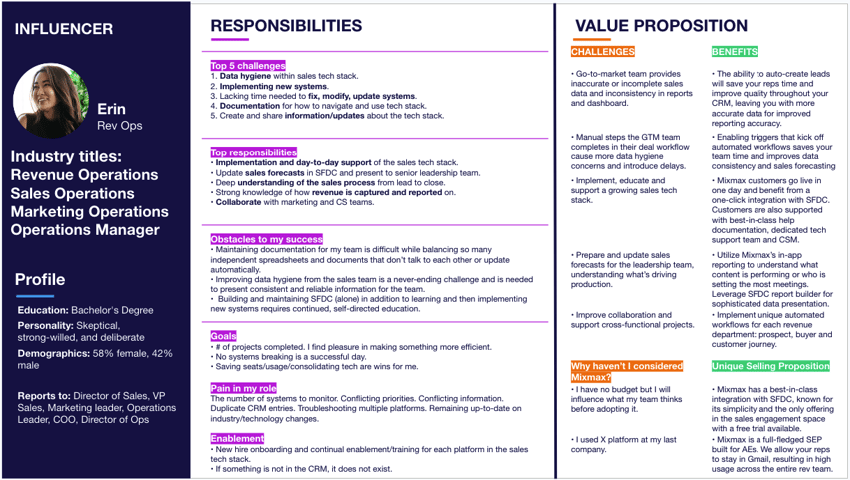
Buyer persona example
2. Practice account-based selling, and define your targets
Enterprise prospecting involves thinking about a company as a whole, rather than targeting an individual decision-maker within it. But since corporations are made of people, account-based prospecting involves targeting multiple individual stakeholders, often simultaneously, over an extended period until you win over the whole company.
And that means picking your targets carefully.
Easier said than done.
In enterprises, job titles vary from company to company (and vary from SMEs to enterprises), and can be misleading, so it’s not always easy to know who to go after. Sean Henry, Enterprise AE at Nory, gets around this by looking at competitors’ case studies to identify exactly which problems his competitor solved for which people within their client company. Then, he looks for people in similar roles in his target accounts. “In a smaller organization,” he says, “corporate gifting or employee gifting might fall under ‘HR manager.’ Within a larger organization, I might need to be a lot more specific, so Employee Experience might be a better title to target.”
Justin Michael of Salesborgs recommends leveraging Boolean searches (AND, NOT, OR) in LinkedIn Sales Navigator and the LinkedIn jobs section to find your target roles. Try company job pages, too, to see how the recruiting dept describes people’s functions.
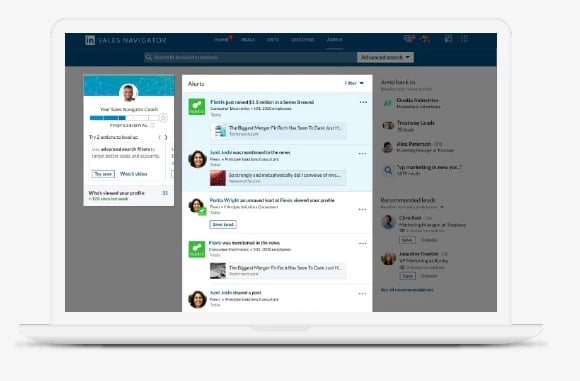
3. Cultivate champions
Prospecting to enterprises requires a strategic approach, which often means starting on the ground floor.
Reach for the C-suite stars immediately and you’re unlikely to get a response (but if you do, share your secret!) Instead, start with lower levels who are less likely to be overwhelmed with emails and meetings.
Depending on the organization, reaching out to middle management may work, or you may get better results starting lower down.
Either way, once you’ve made a connection, you can start cultivating your champions. These are the people your solution will make the biggest difference to, so they’ll help you convince higher-ups.
Here’s an interview we did with Nate Nasralla, Founder of Fluint, on how to find and cultivate champions:
Nate Nasralla on how to cultivate sales champions
Pro tip: At each meeting or touch, ask open-ended sales prospecting questions to find out who else you should be talking to, so you can loop them in.
4. Use multi-threading
Targeting multiple prospects takes time, and you can’t afford to waste it on linear outreach. Instead, use a multi-threaded approach to target multiple people simultaneously.
Justin Michael recommends targeting three to five executives at a time (whose results are directly impacted by the pain you solve) with short 3-day “clusters” of emails and calls. If that doesn’t work, swap them for others on your list and/or target their boss. The idea is to fire off enough multi-channel touches in a short space of time to create an internal buzz where they start talking to each other about you.
In this interview with Krysten Conner, Sales Strategist at UserGems, she breaks down how to achieve multi-threading:
Krysten Conner on sales multi-threading
To further save time, use lead scoring tools and prioritize prospects according to how warm the lead is, how well they match your buyer persona, and any previous interactions you had (which you can reference in your messaging).
There’s a lot to keep on top of, so Mixmax multi-channel sequences help you stay on top of follow-up. Real-time engagement insights and alerts also tell you who’s looking at your content, and who they shared it with, so you can follow up when top of mind.
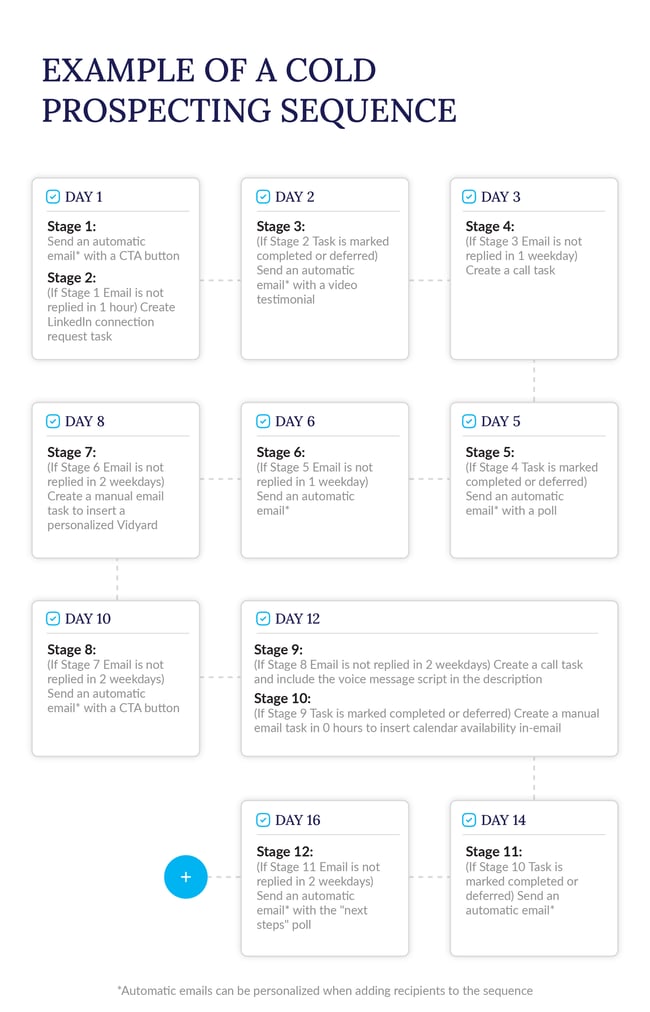
5. Tailor outreach to individuals
“Salespeople are always encouraged to be personalized in their outreach,” says Ryan Doyle, Chief Vibes Office at sales.co, “That takes on new meanings as they prospect enterprise brands.”
Winning over a corporation means winning over each stakeholder within it, which means creating personalized messaging and content that shows you get them.
With SMEs, mentioning a prospect’s name, company and your value proposition in emails may be enough to get a response. With enterprise executives, however, who receive hundreds of emails a day, you need to go for contextual personalization.
“Did their CEO just speak in an interview, and you're including that context? Did this person just get promoted, and now is able to consider new solutions? Maybe their 10K report came out, and you're weaving in context from their annual vision,” says Ryan Doyle.
Here’s a tip from Jen Allen-Knuth from Lavender on how to use a CEO’s recent activities in cold outreach to get prospects to engage with your email:
Jen Allen-Knuth on sales engagement tips
Use your research data and tailored content created by marketing to craft highly relevant, personalized messaging, value propositions, and objection handling.
Focus on the benefits of your solution to them as an individual. If you’re selling email marketing software and you know bounce rates are a problem, target the head of marketing. If GDPR compliance is an issue, you need to talk to Legal.
Sean Henry recommends first speaking to people in your own company whose roles mirror your targets. Which sales emails do they open? Which approaches convince them to have a conversation? Then, use those insights to craft messaging for similar roles in your target account.
Find out where your prospects live and reach out over the most appropriate channel.
Use personalization triggers to customize the content and schedule of each stage of your Mixmax sequences for each prospect, including when you add new recipients and combine calls, email, voicemail, and LinkedIn messaging for best results. Customizable sales prospecting email templates that autofill with prospects’ data from your CRM also make it easy to personalize at scale.
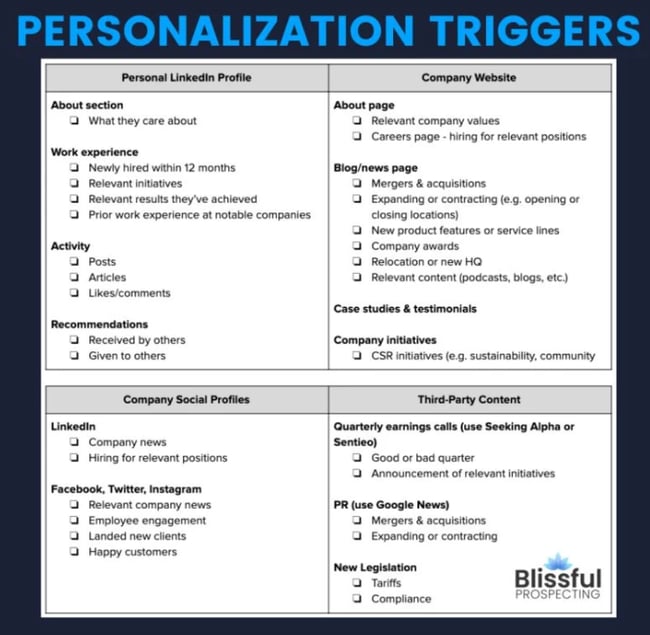
6. Work on your personal and company brand
Enterprise accounts field a much higher number of requests from salespeople than SMEs, so it’s harder to get a response to cold outreach.
That means you need to put the hours in behind the scenes first.
“In terms of strategy, it’s always worth remembering that enterprise customers are generally more risk-averse than SME customers. Therefore your strategy will need to demonstrate your credibility in the industry and your reliability as a partner,” says Chloe Addis, Head of Marketing at Headley Media,
“Enterprise prospecting is all about how you position yourself, and building relationships and trust, and definitely not about making a quick sale.”
Good PR and marketing campaigns that establish your brand and reputation will help SDRs immensely when they reach out. As will cultivating thought leadership and promoting your in-house industry knowledge by speaking at conferences, publishing online, and being active and helpful in relevant industry communities.
“You need to touch base, nurture, nurture, nurture, using webinars, whitepapers, blogs, case studies, etc., and let them come to you when they feel, while also not losing the numbers game,” says Srivaradha Vanamamalai.
7. Practice social selling
Practice social selling by connecting on LinkedIn and interacting with their posts. If you’re using Mixmax, you can send LinkedIn messages without leaving your Gmail inbox.
Reference that interaction or their online activity in your outreach. Even if you don’t get a response, InMails help get your name on their radar before you land in their inbox. It also never hurts to send a photo to put a face to the name.
Hannah Ajikawo, Founder & CEO of Revenue Funnel, says, “[LinkedIn] isn’t about pitching and prospecting, it’s just nurturing and building a community. Every time your marketing team [creates relevant content] or you’re learning stuff, share it with the people you’re connecting with… and don’t expect anything back.”
Check out the full interview with Hannah here.
8. Use referrals and social proof, and build trust
People trust people they know more than they trust unknown sales reps, so warm up first touches by asking for referrals from your strategic partners, former colleagues, and non-competing vendors. Scour your higher-ups’ LinkedIn networks to see if they’re connected to your targets, and ask for an introduction.
When you reach out, speak the prospect's language, and don’t try to wing it. People in large enterprises are very likely to be familiar with the space you’re operating in and can smell BS from a mile off.
Be upfront, honest, and always own up if you don’t know something. When you get them on the phone, build trust by listening more than you talk and being a trusted advisor who sells solutions, not a salesperson.
Share relevant results with believable numbers, and case studies of your existing customers (the bigger the better) to demonstrate your experience and reliability.
“If you talk the talk and back it up with legit references they can speak to on the phone or in person, you have a much better chance of landing the client,” says Benjamin K. Walker, Founder & CEO of Ditto Transcripts.
9. Stand out from the crowd
Kind of a no-brainer, this, but with everyone and their dog targeting enterprises, you’ve got to work extra hard to cut through the noise.
One of the best ways to do this is by using pattern interruption techniques to jolt prospects out of the knee-jerk “not interested” reaction they’ve been conditioned into.
Experiment with visuals, video, and voicemail in your Mixmax sequences, and use polls, surveys, and share your availability in-email to make it easier for them to respond. At your own risk, experiment with humor, unexpected grammar, formatting, language, and tone.
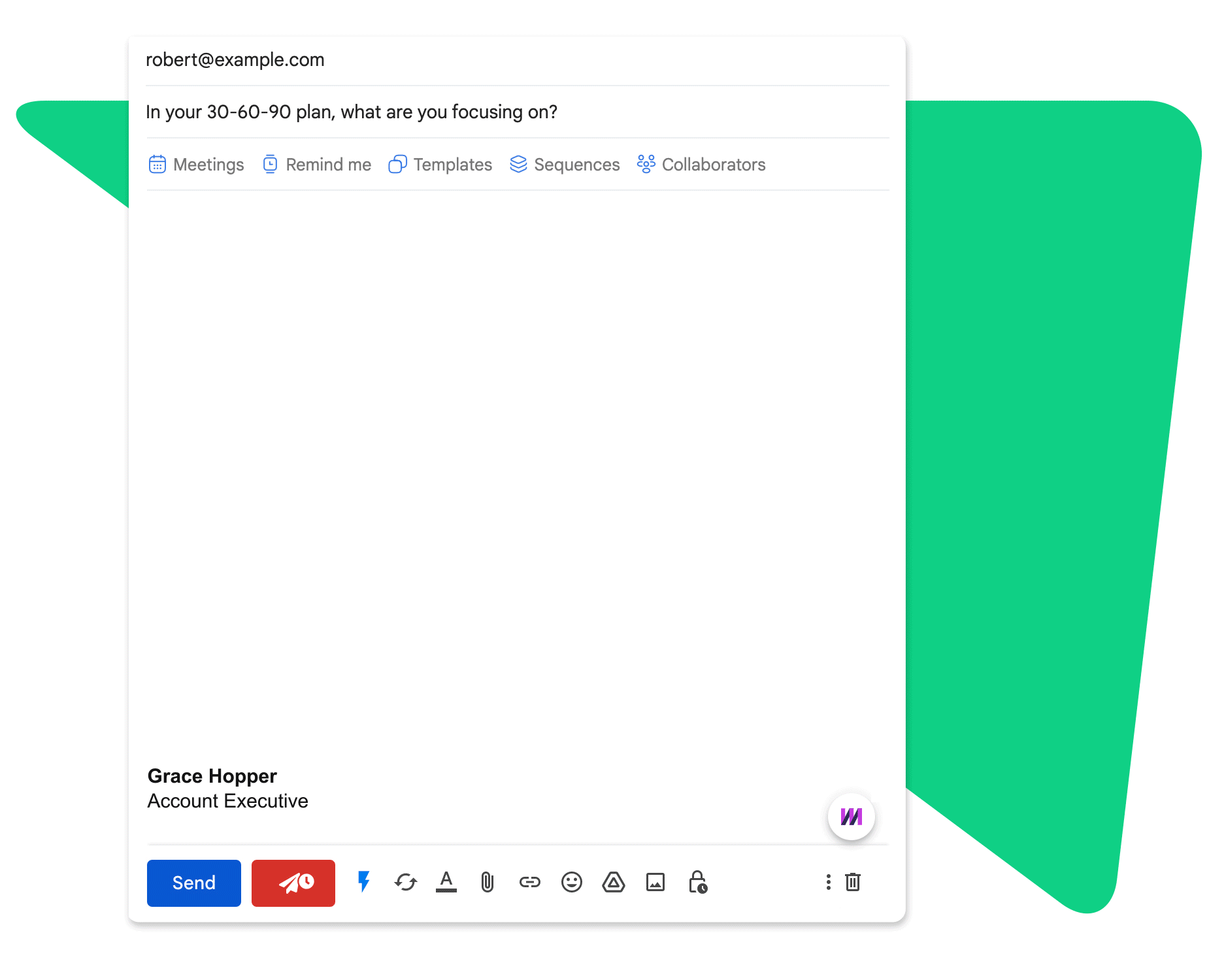 Increase reply rates with Mixmax in-email Polls
Increase reply rates with Mixmax in-email Polls
Your subject line is the first thing they’ll see when you land in their inbox, so check out our suggestions for writing engaging sales prospecting email subject lines to help you stand out.
Try corporate gift-giving, which can help you stand out, and creates an unspoken expectation of reciprocity (you did something for them, so the least they can do is reply to you).
Plus, if you pick the right gift, it reinforces the impression that you’re thinking about them as an individual, not part of an impersonal email blast.
10. Automate wherever possible
There’s a lot to keep on top of with complex sales processes, so use sales prospecting tools to automate manual or repetitive tasks, and gather accurate, actionable prospect and purchase intent data from multiple sources.
Build an integrated tech stack based around Mixmax to help manage the sales pipeline from first touch to sealing the deal and beyond.
The Gmail sidebar and integrations with popular sales tools like LinkedIn Sales Navigator, Google Calendar, Zoom, DocuSign, and more allow all your sales teams to collaborate, perform essential tasks, and access up-to-date sales and prospect data without leaving their inbox. The two-way Salesforce integration also means goodbye busywork and hello more accurate forecasting.
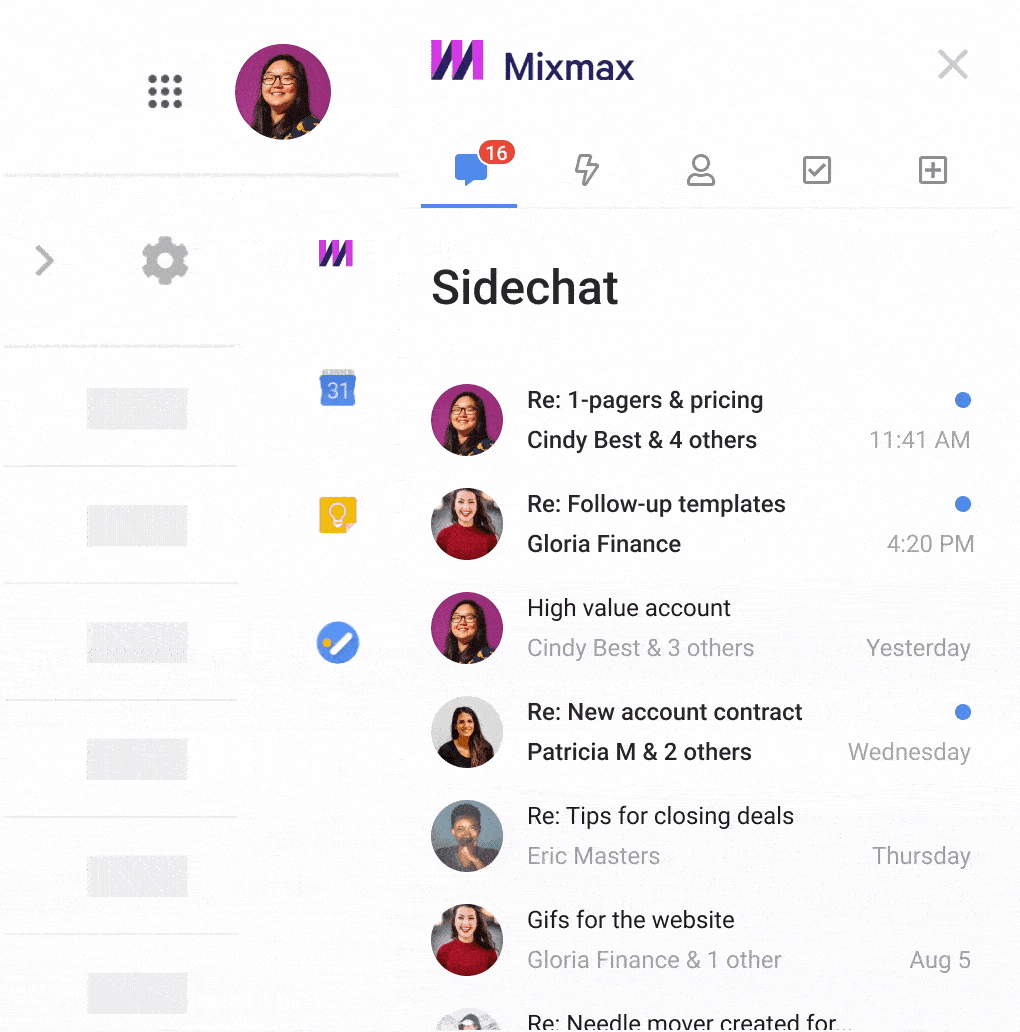
Mixmax Sidechat allows you to chat & collaborate on emails
Time to seal the deal
Sales strategies for prospecting to enterprises build on B2B prospecting best practices but with a much more structured, holistic approach to winning over an entire company rather than a sole decision-maker.
Mega corporations are slower-moving and more complex than SMEs, so the deal cycle is longer and requires more personalized outreach and nurturing of several prospects simultaneously.
Landing your first enterprise customer takes time, resources, and persistence (and a little help from a multi-function sales engagement platform like Mixmax). Pull it off, though, and it’ll pay dividends in your revenue and reputation, allowing you to set your sights on your next enterprise customer.
The only way is up, baby.
Frequently asked questions about enterprise sales prospecting
How do I prospect to an enterprise company?
You prospect to an enterprise company by mapping and targeting the company as a whole, rather than focusing only on one decision-maker. In enterprises, several stakeholders are involved in making buying decisions, so you need to think about how your solution can benefit each one, and which approaches, messaging, and sales collateral you will need to convince them.
What is an enterprise sales approach?
An enterprise sales approach relies on in-depth research and mapping of the organization, followed by highly personalized outreach to individuals within it, usually starting with the lower levels. The aim is to win over individuals who can act as champions and promote your product to higher-ups.
What is an example of enterprise sales?
An example of enterprise sales is when you sell to big companies or corporations. For example, a small software company sells its solution to a large multinational company for use in several departments, or across the company as a whole. This has the potential to generate more revenue for the software company than a series of sales to small or medium-sized businesses. It also helps establish their reputation.
What skills do you need for enterprise sales?
For enterprise sales prospecting you need to be very persistent, patient, and well-organized so you can sustain a targeted campaign over a long period of time. It also helps to be a good listener and skilled at gaining trust and building relationships.
How to sell SaaS to enterprises
You sell SaaS to enterprises by thinking of the company as one target account, rather than trying to convert an individual decision-maker within it. Do your research well and look for enterprises that closely match your ideal customer profile. Then, begin a targeted campaign focused on convincing individual stakeholders who can act as champions and promote your solution to higher-ups. It also helps to think about how your solution can benefit multiple departments, as well as how you’re going to provide ongoing support and training.
Thanks for insights to:
Xavier Bordier
Mark Laufert
Jason Bay
Lisa Cox
Sean Henry
Chloe Addis
Ryan Doyle
Benjamin K. Walker
Michael Alexis
Brian Quinn
Srivaradha Vanamamalai
Justin Michael


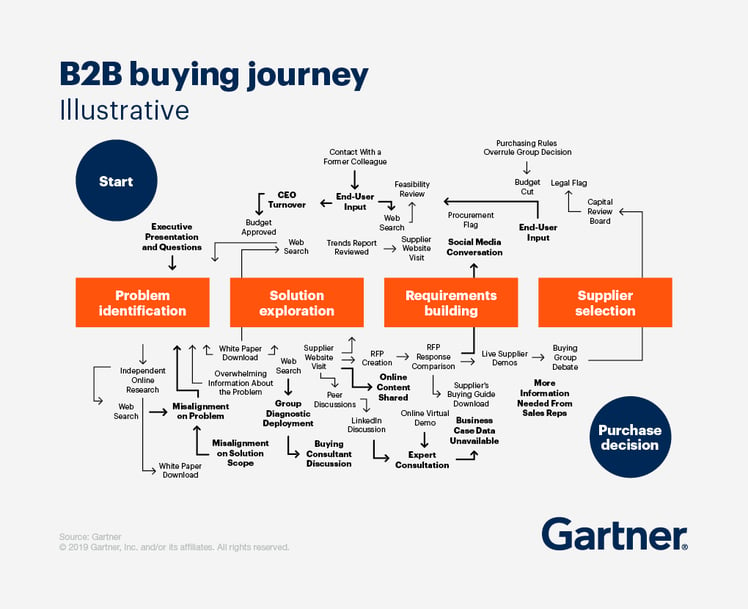

.png?width=450&height=250&name=Episode%20Graphic%20(1).png)
